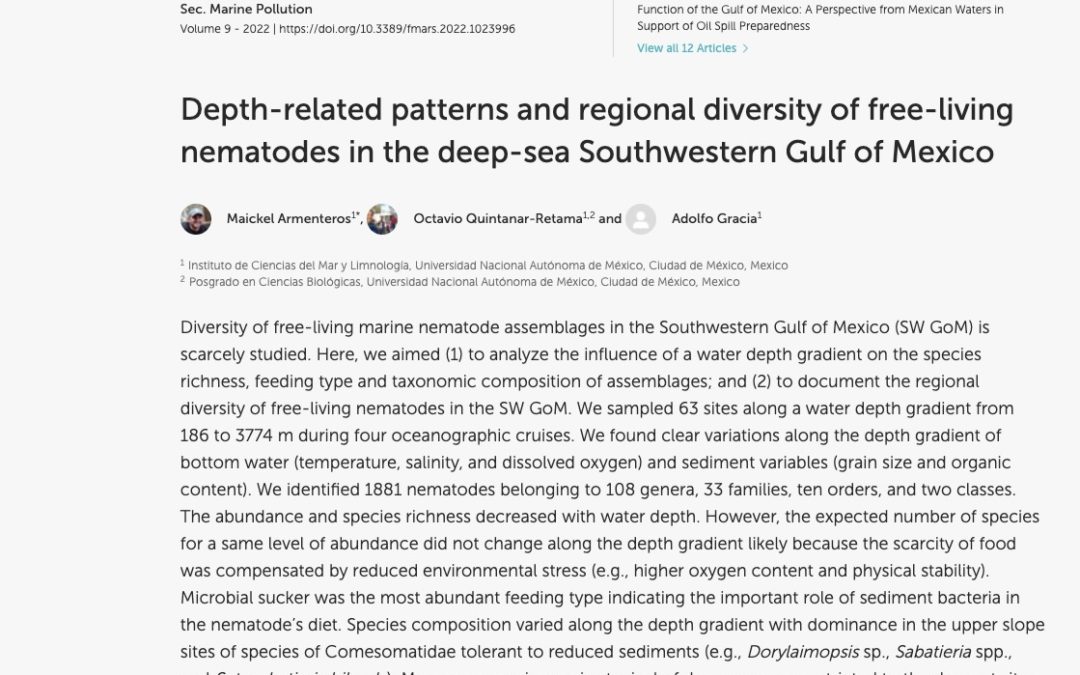Authors: Maickel Armenteros, Octavio Quintanar-Retama and Adolfo Gracia
https://doi.org/10.3389/fmars.2022.1023996
Abstract
Diversity of free-living marine nematode assemblages in the Southwestern Gulf of Mexico (SW GoM) is scarcely studied. Here, we aimed (1) to analyze the influence of a water depth gradient on the species richness, feeding type and taxonomic composition of assemblages; and (2) to document the regional diversity of free-living nematodes in the SW GoM. We sampled 63 sites along a water depth gradient from 186 to 3774 m during four oceanographic cruises. We found clear variations along the depth gradient of bottom water (temperature, salinity, and dissolved oxygen) and sediment variables (grain size and organic content). We identified 1881 nematodes belonging to 108 genera, 33 families, ten orders, and two classes. The abundance and species richness decreased with water depth. However, the expected number of species for a same level of abundance did not change along the depth gradient likely because the scarcity of food was compensated by reduced environmental stress (e.g., higher oxygen content and physical stability). Microbial sucker was the most abundant feeding type indicating the important role of sediment bacteria in the nematode’s diet. Species composition varied along the depth gradient with dominance in the upper slope sites of species of Comesomatidae tolerant to reduced sediments (e.g., Dorylaimopsis sp., Sabatieria spp., and Setosabatieria hilarula). Many congeneric species typical of deep sea were restricted to the deepest sites such as Acantholaimus spp., Ledovitia spp., Desmoscolex spp., and Halalaimus spp. The nematode regional diversity of SW GoM was 154 species, but the Chao 1 estimator indicated a richness of about 194 species and a highest limit of 246 species. The accumulation curves of richness were non-asymptotic suggesting a substantial fraction of undiscovered richness. Our study increased the free-living nematode fauna of GoM in 144 species (76%) respect to Hope’s list (2009). The large diversity of nematodes stands out the necessity of further studies to unravel the environmental drivers of α- and β-diversities and highlights the potential of this taxon for monitoring the deep sea of the Gulf of Mexico.
Keywords: nematodes, deep sea, richness, γ-diversity, Gulf of Mexico


Comentarios recientes